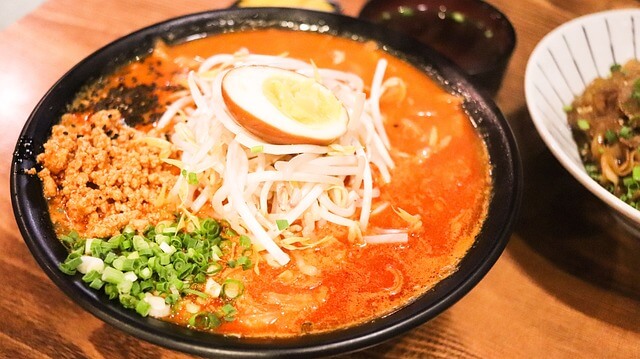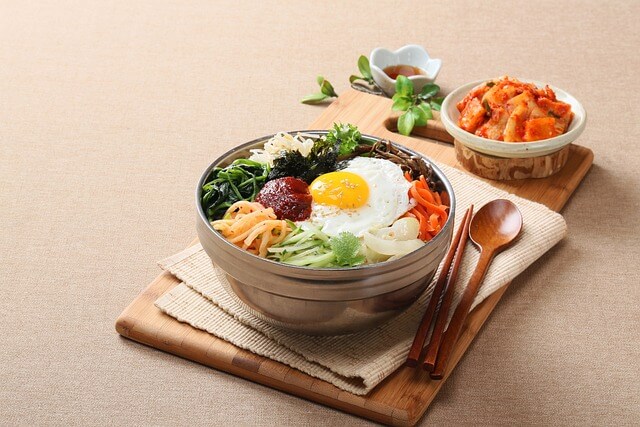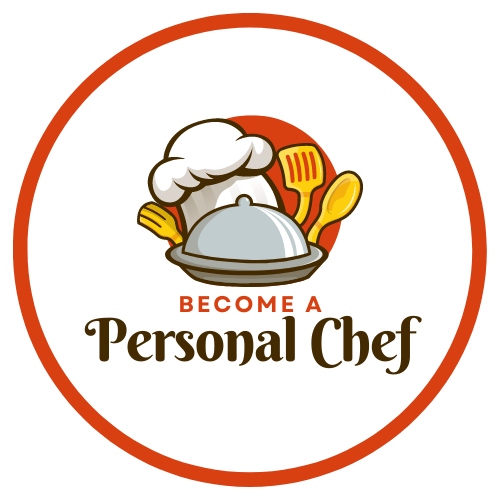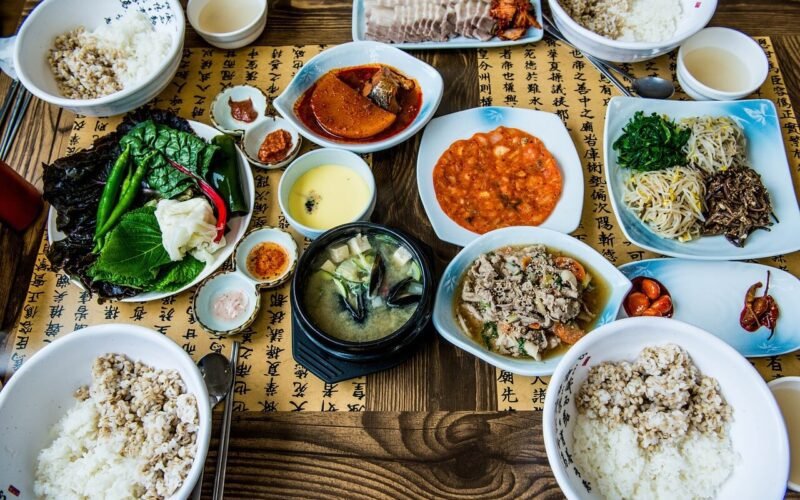Table of Contents
ToggleKorean Food for Personal Chefs
Welcome to the adventurous world of cuisine! As personal chefs, we are constantly searching for new and unique flavors to add to our repertoire. Today, we embark on a culinary journey to South Korea, a country renowned for its vibrant and flavorful cuisine.
Aspiring personal chefs need to offer something different than traditional chefs who specialize in one or two kinds of cuisines. I’ve written an extensive article with links to many cuisines for your consideration – World Cuisine for Personal Chefs
Key Ingredients in Korean Cuisine
Korean Food for Personal Chefs. Korean cuisine is known for its diverse use of ingredients that create unique, balanced flavors. Some key ingredients include:
Gochugaru (Korean Chili Powder): This is used extensively to add heat to many dishes.
Gochujang (Korean Chili Paste): This fermented chili paste adds a spicy, umami flavor.
Doenjang (Korean Soybean Paste): It’s similar to miso but stronger and more assertive.
Soy Sauce: Used as a seasoning and marinade.
Sesame Oil: Adds a nutty flavor to dishes.
Garlic: Used generously in many dishes.
Rice: A staple in Korean meals.
Seaweed and Anchovies: Used in soups and side dishes.

Sourcing Ingredients and Finding Substitutes
Most of these ingredients can be found in Asian grocery stores or online. If certain ingredients are hard to find, substitutes can sometimes be used.
For instance, miso can be used as a substitute for doenjang, although it lacks the same robust flavor. Tamari can be used in place of soy sauce, but it has a stronger taste. Agave nectar can be substituted for honey, although it may alter the sweetness level slightly.
It’s important to keep in mind that while substitutes can work in a pinch, they may not always provide the same depth of flavor as the original ingredients. Korean Food for Personal Chefs. It’s worth taking some time to search for specialty stores or online shops that carry these ingredients to truly experience the authentic flavors of each dish.
When sourcing ingredients, it’s also important to consider their quality and sustainability.
This not only ensures the highest quality and freshest taste, but also supports small businesses and reduces our carbon footprint. Purchasing organic, locally-sourced ingredients not only benefits our health, but also the health of our planet.
In addition to using high-quality ingredients, cooking with a variety of herbs and spices can elevate the flavors in any dish. Not only do they add depth and complexity to a meal, but many herbs and spices also have medicinal properties that can benefit our overall well-being.
Ever wondered about the key to a successful personal chef business? Your answers await! Click here and join us as we delve into the essential steps and sophisticated strategies you need to master for a flourishing career as a personal chef. Don’t just dream it, achieve it!

Traditional Cooking Methods and Taste Profile
Korean cuisine employs a variety of cooking methods, from grilling to fermenting. The dominant flavors are a balance of spicy, sweet, and savory. While many dishes are spicy, the level of spice can be adjusted to suit your client’s preference.

Cultural Significance and Dietary Considerations
Korean cuisine reflects the country’s history and cultural practices, with a significant emphasis on fermentation and communal dining. When preparing Korean dishes, consider potential dietary restrictions. Many dishes can be adapted to suit vegetarian or vegan diets.

Health Considerations and Accompaniments
Korean cuisine is often considered healthy due to its emphasis on vegetables and fermented foods, which promote gut health. Traditional accompaniments include kimchi, various banchan (small side dishes), and rice.

Presentation and Preparation
Korean dishes are typically served family-style, with several shared dishes placed in the center of the table. Some dishes, like kimchi, require advance preparation due to fermentation times.

Personalizing Korean Cuisine
As a personal chef, you can personalize each dish to your client’s preferences. Whether they prefer less heat, a different protein, or a vegetarian version, there’s plenty of room for modification while still maintaining authentic Korean flavors.
Wondering what tools a personal chef might need? I’ve written an extensive article for you – A Comprehensive List Of Must-Have Tools and Essential Items for the Personal Chef

Korean Food for Personal Chefs
So, are you ready to take your clients on a culinary journey to Korea? With its complex flavors and rich cultural history, Korean cuisine is sure to be a hit!
Here are some of my favorite tools for providing my personal chef service
As an experienced personal chef, I’ve found that the secret to creating mouthwatering dishes goes beyond just having a passion for food. It’s also about using the right kitchen tools. Today, I’m going to share with you my must-have kitchen items that help me bring my culinary creations to life.
1. Chef’s Knife
The first item on my list is a high-quality chef’s knife. It’s the most versatile tool in my kitchen, perfect for chopping, slicing, and dicing. My preference is for a Global Chef’s Knife, known for the edge and the way they are balanced.
2. Cast Iron Skillet
Next up is a good old cast-iron skillet. From searing steaks to baking cornbread, this pan does it all. I love the Lodge Cast Iron Skillet, which retains heat beautifully and adds a nice crust to anything you cook.
3. Stainless Steel Pots and Pans
A set of stainless steel pots and pans is essential for a variety of cooking techniques. They’re great for simmering, boiling, and sautéing. All-Clad’s Stainless Steel Cookware Set is my go-to choice for its exceptional performance and durability.
4. Immersion Blender
An immersion blender makes pureeing soups, making smoothies, and blending sauces a breeze. I suggest the Braun Multiquick Hand Blender, which is powerful, easy-to-clean, and highly versatile.
5. Digital Thermometer
To ensure perfectly cooked meats every time, a digital thermometer is a must. The ThermoPro TP19 Waterproof Digital Meat Thermometer provides speedy and accurate readings, ensuring your roast chicken or prime rib is cooked to perfection.
6. Silicone Spatula
A silicone spatula is a chef’s best friend for its versatility. It’s heat-resistant, non-stick, and perfect for everything from folding batter to stirring sauces. I recommend the OXO Good Grips Silicone Spatula.
7. Stand Mixer
Lastly, for avid bakers, a stand mixer is a game-changer. The KitchenAid Artisan Series 5-Qt. Stand Mixer isn’t just a pretty face; it makes mixing doughs and batters effortless.
These are the tools that I use daily in my personal chef service. Remember, quality tools make a difference, but they don’t have to break the bank. Start with the basics and add on as you grow more comfortable and adventurous in the kitchen.
Happy cooking!

